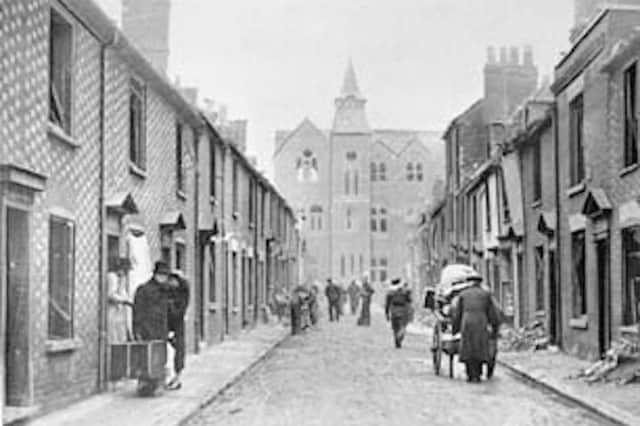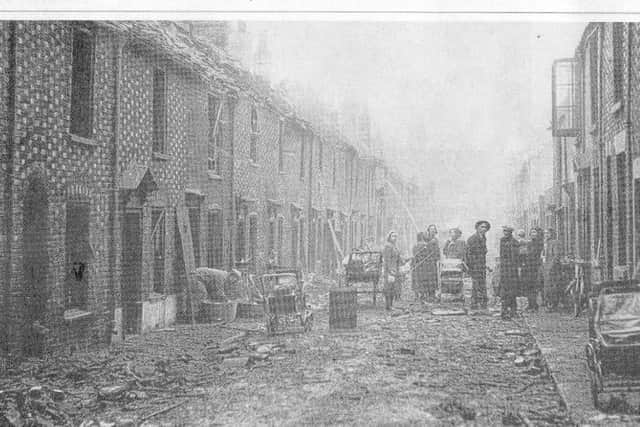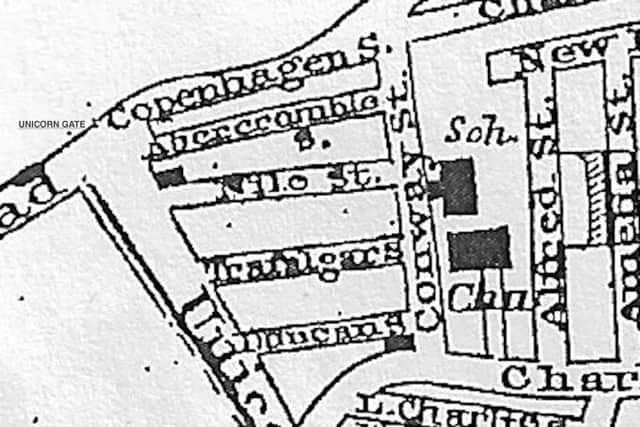Nostalgia – the single bomb that fell on the Conway Street area of Portsmouth and killed 15 people just before Christmas 1940


Despite much research, I have never got to the bottom of what happened, and how one bomb could cause such devastation - 15 city residents were killed and many more injured.
The most factual answer was that a Luftwaffe bomber was carrying just one high explosive bomb with the aim of dropping it within the dockyard.
Advertisement
Hide AdAdvertisement
Hide AdIf the bombardier released the bomb at the right time then it would have caused so much damage to shipping, especially if there were battleships in dry dock.


However, if he released the bomb just a second or two early, then it would have landed just outside the Unicorn Gate where Conway Street and multiple other streets were.
I am wondering if the bomber was shot down and crashed on the houses; such was the size of the bomb, there was little left of the airplane and its crew to find.
Of the 15 who died were two girls aged 13 and 17 and an eight-year- old boy, James Mihell.
Advertisement
Hide AdAdvertisement
Hide AdI spoke to Bill Harris, now of Havant, who told me he and two siblings were in the front room of their house playing in the front room.


His stepmother was visiting and his father, a coalman, was out making deliveries over the hill.
Bill, then three and a half years old, told me: ‘My younger sister Beryl, aged 36 months, and my older brother Eric, aged 7, were in the front room when there was a ‘whoosh’ and the windows caved in.
‘Some of the glass was blown across the room, embedding itself in the chimney breast.
Advertisement
Hide AdAdvertisement
Hide Ad‘The curtains were at right angles to the window. We tried to get out but couldn’t open the front door, so Eric picked up a chair from the scullery and carried it to the door where he managed to get the door open.’
Bill told me he and his siblings ran out into the street and he can remember, even at that young age, roof tiles hanging off the houses and windows and doors blown in.
He can also remember machine guns manned by sailors being fired from outside the barracks.
His father was driving home and arrived by the George Inn on top of Portsdown Hill, where he was stopped by a policeman on point duty.
Advertisement
Hide AdAdvertisement
Hide AdHe could see the smoke coming from the area where he lived and told the policeman that he had to be allowed to pass.
He said the raid had taken place where his family lived. but the policeman took no notice.
Taking matters into his own hands, Bill’s father drove past the policeman.
As he was driving a coal lorry, he was easily traced and the local JP fined him ten shillings (50p).
I know it is now over 80 years ago, but if anyone has any knowledge whatsoever of the Conway Street bomb please let me know.